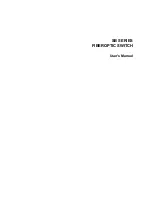
Echo Wireless Switches
4 of 4
Copyright © 2018 Savant Systems, LLC
009-1758-03 | 190603
Multi-Gang Installations
When combining multiple Keypads into a multi-ganged box, no derating is required. Removing the outside tabs from one or both
sides of each device so they all fit into the electrical switch box. Below are examples of 2, 3 and 4-gang scenarios.
–
Tabs are removed from both sides of the inside gang devices.
–
Tabs are NOT removed from outside edges of the devices at the end of each gang.
Derating Table
Wiring Diagrams
The diagrams below display how to wire the Echo style keypad.
Any unused wires must have the bare wire portion (stripped
end) cut off and the wire must be capped with a wire nut.
From
Power
Cap if
Unused
Single Switch Installation Example
Device
Load Type
1-Gang
2-Gang
3-Gang
4-Gang
Switch
Incandescent
600W
550W
500W
500W
CFL/LED
150W
150W
150W
150W
Magnetic Low Voltage
(Electrical Discharge lamp loads
(magnetic ballast))
600VA (450W)
550VA (400W)
500VA (375W)
500VA (375W)
Electronic Low Voltage
450W
400W
375W
375W
Regulatory
The following statements are applicable to the Echo Wireless Dimmers,
Switches, and Keypads.
FCC Regulations
15.19. These devices comply with part 15 of the FCC Rules. Operation is
subject to the following two conditions: (1) These devices may not cause
harmful interference, and (2) these devices must accept any interference
received, including interferences that may cause undesired operation.
15.21. The changes or modifications not expressly approved by the party
responsible for compliance could void the user’s authority to operate the
equipment. 15.105. This equipment has been tested and found to comply
with the limits for CLASS B digital device, pursuant to Part 15 of FCC
Rules. These limits are designed to provide reasonable protection against
harmful interference when the equipment is operated in a residential
environment. This equipment generates, uses and can radiate radio
frequency energy and, if not installed and used in accordance with the
instructions, may cause harmful interference to radio communications,
However there is no guarantee that interference will not occur in a
particular installation, If this equipment does cause harmful interference
to radio or television reception, which can be determined by turning
the equipment off and on, the user is encouraged to try to correct the
interference by one or more of the following measures:
–
Reorient or relocate the receiving circuit different from that to
which receiver is connected.
–
Increase the separation between the equipment and the receiver.
–
Consult the dealer or experienced radio/TV technician for help.
IC Regulations:
RSS-Gen 7.1.3. These devices comply with Industry Canada license-
exempt RSS standard(s). Operation is subject to the following two
conditions: (1) These devices may not cause interference, and (2) These
devices must accept any interference, including interference that may
cause undesired operation of the device. RSS-21- Annexe 9: A 9.4. Le
présent appareil est conforme aux CNR d’Industrie Canada applicables
aux appareils radio exempts de licence. L’exploitation est autorisée
aux deux conditions suivantes: (1) l’appareil ne doit pas produire de
brouillage, et (2) l’utilisateur de l’appareil doit accepter tout brouillage
radioélectrique subi, même si le brouillage est susceptible d’en
compromettre le fonctionnement.





















